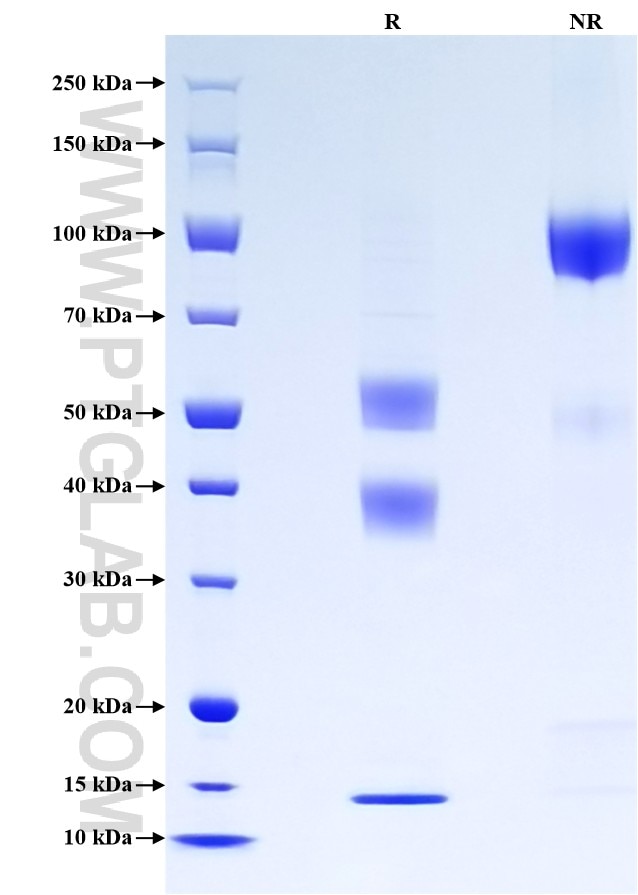Recombinant Human TGF beta 1 protein (His Tag)
Species
Human
Purity
>90 %, SDS-PAGE
Tag
His Tag
Activity
not tested
Cat no : Eg0879
Validation Data Gallery
Product Information
| Purity | >90 %, SDS-PAGE |
| Endotoxin | <0.1 EU/μg protein, LAL method |
| Activity |
Not tested |
| Expression | HEK293-derived Human TGF beta 1 protein Leu30-Ser390 (Accession# P01137) with a His tag at the C-terminus. |
| GeneID | 7040 |
| Accession | P01137 |
| PredictedSize | 42.3 kDa |
| SDS-PAGE | 14 kDa, 35-40 kDa and 47-60 kDa, reducing (R) conditions |
| Formulation | Lyophilized from 0.22 μm filtered solution in PBS, pH 7.4. Normally 5% trehalose and 5% mannitol are added as protectants before lyophilization. |
| Reconstitution | Briefly centrifuge the tube before opening. Reconstitute at 0.1-0.5 mg/mL in sterile water. |
| Storage Conditions |
It is recommended that the protein be aliquoted for optimal storage. Avoid repeated freeze-thaw cycles.
|
| Shipping | The product is shipped at ambient temperature. Upon receipt, store it immediately at the recommended temperature. |
Background
TGF-beta is a member of the transforming growth factor beta (TGFB) family of cytokines, which are multifunctional peptides that regulate proliferation, differentiation, adhesion, migration, and other functions in many cell types. TGF-beta is produced by a number of cell types including regulatory T cells, fibroblasts, epithelial cells, and endothelial cells. TGF-beta acts synergistically with TGFA in inducing transformation. It also acts as a negative autocrine growth factor. TGF-beta plays an important role in bone remodeling as it is a potent stimulator of osteoblastic bone formation, causing chemotaxis, proliferation and differentiation in committed osteoblasts. TGF-beta appears to promote late stage progression and metastasis in some cancers.
References:
1. Siegel, Peter M, and Joan Massagué. Nature reviews. Cancer vol. 3,11 (2003): 807-21. 2. Bierie, Brian, and Harold L Moses. Nature reviews. Cancer vol. 6,7 (2006): 506-20. 3. Tian, Maozhen, and William P Schiemann. Future oncology (London, England) vol. 5,2 (2009): 259-71. 4. Priyadarshi, Saurabh et al. Journal of bone and mineral research : the official journal of the American Society for Bone and Mineral Research vol. 28,12 (2013): 2490-7.
